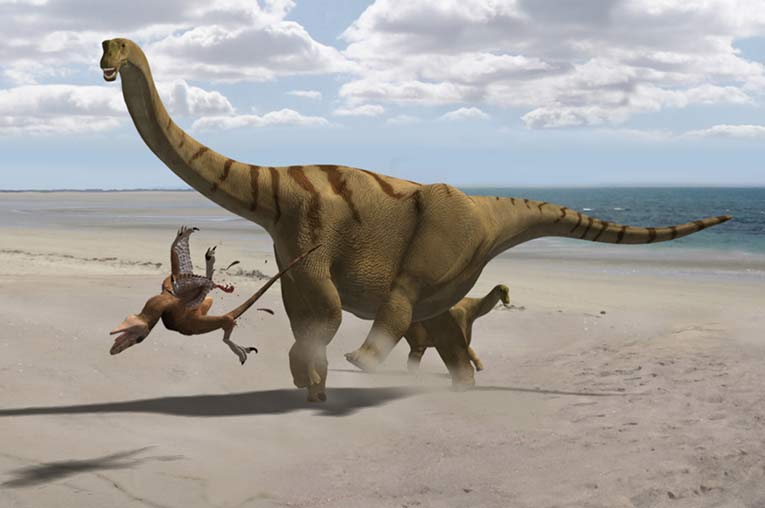A new species of dinosaur, Brontomerus, literally 'thunderthighs', has been found in a quarry in Utah, USA. Named for it's extremely large thigh muscles, the larger than elephant-sized beast may have used them to kick fight predators or rivals.
The scientists found two specimens of the new dinosaur and speculate that one is the mother of the other.
Mum clocked in at 6 tonnes, about the same as a large elephant, but was 14 metres long. The smaller animal, a juvenile, would have been about the size of a pony and 4.5 metres in length
A member of the Sauropod dinosaur group, Brontomerus was long necked and short legged, and lived about 110 million years ago during the Early Cretaceous period. Brontomerus would have shared its landscape with fierce raptor predators like Utahraptor.
Mike Taylor of UCL London was the lead author of the study. 'Brontomerus mcintoshi was a charismatic dinosaur and an exciting discovery for us,' he said, 'The unusually large hip bones are a really weird shape that accommodates attachments for very large thigh muscles that we conclude were used for kicking.'
Mike's co-author, Matt Wedel of the Western University of Health Sciences in California added, 'Other marks on the bones give additional clues about the animal's lifestyle and environment. Bumps on the shoulder blades indicate powerful forelimbs too. Brontomerus was probably much more athletic than the other sauropods.' Far from being swamp bound hippo-like animals, sauropods of this era seem to have preferred drier upland areas. The paleontologists speculate that the muscular thunderthighs helped them to navigate the rough and hilly terrain.
Other than a new extreme form of dinosaur, the find has a wider significance as until recently scientists believed that the sauropods who were the most common animals during the preceeding Jurassic era, had begun to die out in the Early Cretaceous. 'Finds like Brontomerus and others over the last 20 years are changing the picture,' explains Wedel, 'it seems likely that the sauropads were every bit as diverse in the Cretaeous, just less abundant and less likely to be found in the fossil record.
The new species is described in a paper recently published in the journal Acta Palaeontologica Polonica.
Top Image: Brontomerus, Photo Credit: Fransisco Gasco










